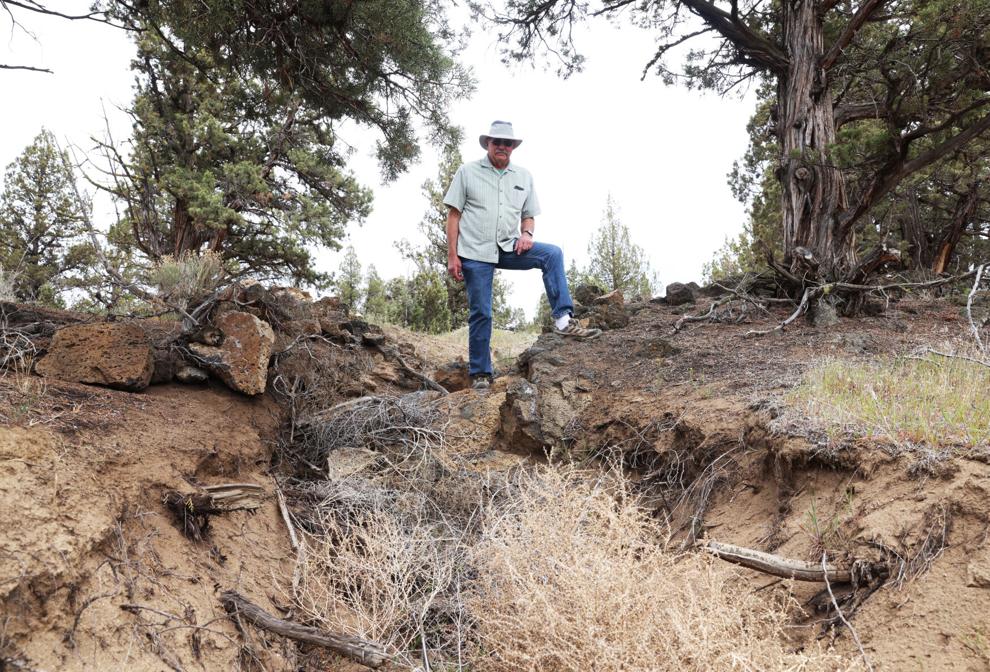Central Oregon Irrigation District patrons will ‘sell’ 90 acres of water to the North Unit Irrigation District this year. Initial targets were for 1,200 acres
A much-anticipated water bank designed to help Jefferson County farmers is underway, just not to the scale that everyone involved had initially hoped.
Patrons from the Central Oregon Irrigation District will this year set aside 90 acres of land to lie fallow, with the water that would have gone to those acres now diverted to the North Unit Irrigation District.
The water bank was set up to help commercial crop farmers and livestock producers in drought-stricken Jefferson County, where water allotments have been slashed to 25% of normal this year. The project will essentially shift water away from Central Oregon Irrigation District patrons who do not need their water this year into a bank of water for use by North Unit patrons. Both irrigation districts have water rights in the Deschutes River Basin, but the Central Oregon Irrigation District has senior water rights, meaning less is available in low-water years to junior rightsholders such as the North Unit Irrigation District.
While water bank facilitators are pleased to get the project off the ground, there was hope for stronger participation in the inaugural year. Around 150 water users expressed interest in giving up their water for use by North Unit farmers in Jefferson County, but only 17 were found to be eligible to participate in the program.
Prior to starting up the project, the Deschutes River Conservancy, the nonprofit organization that is helping to facilitate the project, had a target of putting 1,200 acres into the water bank project.
“We were encouraged with the level of interest in the program (but) a bit disappointed with the final acres that could participate,” said Kate Fitzpatrick, the conservancy’s executive director.
Central Oregon Irrigation District landowners will receive $100 per acre that they don’t water, paid by the North Unit Irrigation District. The North Unit district will also need to pay $25 per acre to the Central Oregon Irrigation District for administering the program, making the total cost to North Unit $125 per acre.
One problem preventing more people from getting onboard was Oregon’s beneficial use policy. Under Oregon water law, water rights must be used once every five years. If water users choose not to use that water on the land, instream leasing through the Oregon Water Resources Department qualifies as a year of beneficial use. However, enrolling in the water bank pilot project does not qualify for a year of beneficial use.
“Any acres that needed to prove up on beneficial use were asked to enroll in the instream leasing program instead if they weren’t going to use the water on the land,” said Fitzpatrick. “This ensures that the irrigation district protects the water rights within the district.”
Fitzpatrick said there may be ways in the future to make participation in the water bank pilot program also count as beneficial use, which could also expand participation.
A second problem encountered by project organizers was related to logistics and operational issues, mostly related to water users sharing a common point of delivery from a district irrigation canal.
“In some cases, leasing one person’s water right can cause issues delivering water to other users. If that was the case, those acres were not eligible to participate,” she said.
As part of its research into getting more people on board, the conservancy also found that some Central Oregon Irrigation District users wanted a program that allowed them to use part of their water allocation and share the rest, in other words, to use less water on their acres. Fitzpatrick said this underscores the need for better measurement capacity within the system so water can be accurately tracked.
The setbacks created a learning experience for project organizers and expectations are for greater participation in the future. The conservancy is seeking federal funding to expand the program and fix operational issues.
“Hopefully this program gets some backing to be a bigger program, and by next year they can do a lot more. We would participate next year,” said Tommy King, treasurer of the Redmond Rod and Gun Club, which temporarily gave up some of its acres to the water bank.
For now, water from the 90 acres of Central Oregon Irrigation District land left fallow will be made available to North Unit Irrigation District. Additionally, the project will have some impact on the Deschutes River ecosystem. The North Unit will be required to release 25% of the water it gets through the project next winter into the river, helping to increase flows during the months when the river runs at its lowest level.
“Water is critical for all of us,” said Fitzpatrick. “The pressing demands moving forward, particularly with the new normal of extreme drought, will make expanding all the solutions critical. These kinds of programs, alongside district piping and on-farm efficiency, have the capacity to make real change happen.”
George Endicott, Redmond’s mayor, and a participant in the water bank project, said for those who were able to participate, there was also a measure of helping farmers in need. He normally grows field grass for animals to come on his property to graze, but he gave up most of his water rights this year to benefit North Unit farmers.
“With the drought, those guys are really hurting,” said Endicott. “We all need to be good neighbors. When it comes to farmers, they all get along and are willing to help their fellow man, so I am happy to do it”.
Michael Kohn




